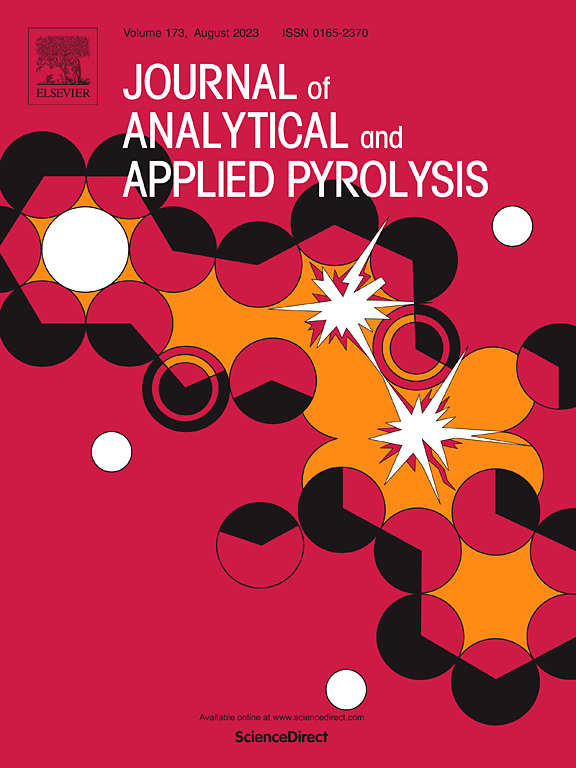Predictive modeling of product yields in microwave-assisted co-pyrolysis of biomass and plastic with enhanced interpretability using explainable AI approaches
IF 5.8
2区 化学
Q1 CHEMISTRY, ANALYTICAL
引用次数: 0
Abstract
Microwave-assisted co-pyrolysis of biomass and plastic offers a transformative approach to converting waste into valuable resources such as bio-oil, biochar, and biogas, while simultaneously addressing critical environmental challenges associated with plastic disposal. This research employs explainable AI methodologies to enhance the prediction and analysis of product yields in biomass-plastic co-pyrolysis. Advanced machine learning techniques, including Decision Tree, Random Forest, Extreme Gradient Boosting (XGBoost), and Artificial Neural Networks, were utilized to model yield predictions effectively. The models were fine-tuned through hyper-parameter optimization, achieving high accuracy levels. The study emphasizes the scientific importance of integrating explainable AI with pyrolysis processes to optimize waste-to-resource recovery, contributing significantly to sustainable waste management and circular economy initiatives. Among these, the XGBoost model demonstrated superior performance, achieving R² values of 0.91 for biochar yield, 0.92 for bio-oil yield, and 0.82 for biogas yield on testing sets. To enhance model interpretability, SHapley Additive exPlanations (SHAP) and Partial Dependence Plots (PDPs) were utilized to assess feature importance and examine parameter influences on yield outcomes, offering valuable insights into process optimization and control. Volatile matter and fixed carbon were key predictors for biochar yield, while moisture content and pyrolysis temperature were significant for predicting bio-oil and biogas yields. This study highlights the potential of explainable AI models in advancing sustainable and efficient bio-product recovery from waste materials.
使用可解释的人工智能方法对微波辅助生物质和塑料共热解的产品产量进行预测建模,并增强可解释性
微波辅助生物质和塑料的共热解提供了一种变革性的方法,将废物转化为有价值的资源,如生物油、生物炭和沼气,同时解决了与塑料处理相关的关键环境挑战。本研究采用可解释的人工智能方法来增强对生物质-塑料共热解产物产量的预测和分析。先进的机器学习技术,包括决策树、随机森林、极端梯度增强(XGBoost)和人工神经网络,被用来有效地建模产量预测。通过超参数优化对模型进行微调,达到较高的精度水平。该研究强调了将可解释的人工智能与热解过程相结合的科学重要性,以优化废物到资源的回收,为可持续废物管理和循环经济举措做出重大贡献。其中,XGBoost模型表现出较好的性能,在测试集上,生物炭产率的R²值为0.91,生物油产率为0.92,沼气产率为0.82。为了提高模型的可解释性,利用SHapley加性解释(SHAP)和部分依赖图(pdp)来评估特征的重要性,并检查参数对产量结果的影响,为工艺优化和控制提供有价值的见解。挥发分和固定碳是生物炭产量的关键预测因子,而水分含量和热解温度是生物油和生物气产量的重要预测因子。这项研究强调了可解释的人工智能模型在促进废物可持续和高效的生物产品回收方面的潜力。
本文章由计算机程序翻译,如有差异,请以英文原文为准。
求助全文
约1分钟内获得全文
求助全文
来源期刊
CiteScore
9.10
自引率
11.70%
发文量
340
审稿时长
44 days
期刊介绍:
The Journal of Analytical and Applied Pyrolysis (JAAP) is devoted to the publication of papers dealing with innovative applications of pyrolysis processes, the characterization of products related to pyrolysis reactions, and investigations of reaction mechanism. To be considered by JAAP, a manuscript should present significant progress in these topics. The novelty must be satisfactorily argued in the cover letter. A manuscript with a cover letter to the editor not addressing the novelty is likely to be rejected without review.

 求助内容:
求助内容: 应助结果提醒方式:
应助结果提醒方式:


